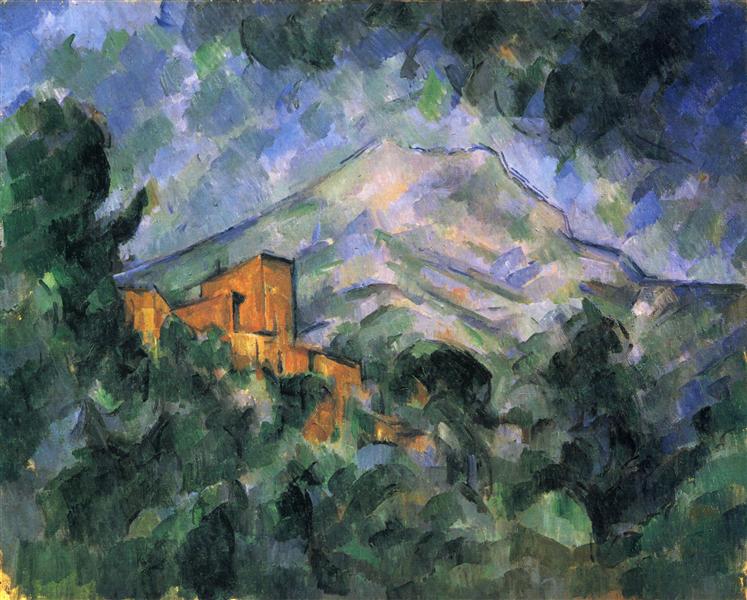Description
Paul Cézanne's "Mount Sainte-Victoire and the Black Castle", painted in 1905, is an outstanding manifestation of the artist's innovative and systematic approach to the depiction of landscape. As one of the pillars of Post-Impressionism, Cézanne seeks not only to capture the appearance of a scene, but also to render the intrinsic structure and very essence of nature. In this painting, the viewer is presented with a composition that plays with the simultaneity of space and form, revealing Cézanne's mastery in excavating three-dimensional depth through two-dimensional painting.
The painting features the majestic Mont Sainte-Victoire in the background, a recurring theme in Cézanne's work, which becomes a symbol of Provence, his homeland. The mountain, represented from a privileged angle, is displayed with an almost sculptural treatment, where the edges and shadows outline its volume. Cézanne uses a palette of earthy colors, shades of green and blue that suggest the vibrant life of nature, as well as light that falls obliquely, creating a play of contrasts that captures the viewer's attention.
The architectural element that gives the work its name, the Black Castle, is situated on the left, introducing an animation that contrasts with the solidity of the mountain. The structure, although represented in a more abstract and less defined way, suggests human intervention in the midst of the natural landscape. This duality between the organic and the constructed, between nature and civilization, is presented harmoniously through the arrangement of the elements on the canvas.
A fascinating aspect of Cézanne's work is his use of color and brushwork, which achieves a rich, nuanced texture. The brushstrokes are visible and highly expressive; each stroke seems to be imbued with a kind of vital energy. Cézanne often applied color in layers, creating a complexity that invites the viewer to contemplate and analyze. In Montagne Sainte-Victoire and the Château Noir, this approach results in a landscape that breathes and lives, in contrast to the flatter depictions of classical Impressionism.
It is interesting to note that, despite the absence of human figures in this work, the presence of nature and architecture communicates a narrative that alludes to rural life in the French province. The shadows and colours that have been used add a sense of temporality, where the viewer is led to interpret the passage of time in a space that has remained throughout history.
In the context of Cézanne's artistic production, this painting stands out not only for its aesthetics, but also for its relevance within the transition between Impressionism and Cubism. Cézanne laid the groundwork for future innovations in the representation of modern art, and "Mont Sainte-Victoire and the Black Castle" encapsulates that evolution. In it, the artist not only captures a place, but also the feeling and perception of a world that is in constant flux.
Cézanne's exploration of the relationship between space and form, his masterful use of color, and his ability to construct a visual narrative from the interplay of elements make this work a testament to the artist's creative genius. "Mont Sainte-Victoire and the Black Castle" is not only a painting of a landscape, but a visual dialogue that invites viewers to reflect on the very nature of art and the environment that surrounds us.
KUADROS ©, a famous painting on your wall.
Hand-made oil painting reproductions, with the quality of professional artists and the distinctive seal of KUADROS ©.
Painting reproduction service with satisfaction guarantee. If you are not completely satisfied with the replica of your painting, we will refund 100% of your money.

